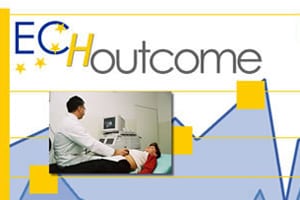 The use of quality adjusted life years (QALY) to decide the cost-effectiveness of new treatments is flawed and should be abandoned, according to an EU study.
The use of quality adjusted life years (QALY) to decide the cost-effectiveness of new treatments is flawed and should be abandoned, according to an EU study.
QALYs underpin many of the reimbursement decisions delivered by the UK’s National Institute for Health and Clinical Excellence (NICE) and other health technology assessment agencies around the world, such as those in Canada and Australia. Meanwhile health technology assessment (HTA) bodies in other countries – notably Germany – have rejected the metric.
QALYs are used weigh the number of life years and the improvement to quality of life provided by different treatments and guide recommendations on whether treatments are offered by the UK’s NHS.
In the UK, if the incremental cost per QALY – in other words the cost of one additional year in good health – is below £30,000 then the treatment is usually recommended to be accessible to patients.
The researchers behind the ECHOUTCOME project, funded by the European Union, recommended at a press conference on Friday that NICE-style assessments based on QALYs should not be rolled out across the rest of Europe as all four of the assumptions which support their use are invalid.
These invalidated assumptions are:
• Time and quality of life can be measured in consistent intervals
• Life years and quality of life are linked
• People are neutral about risk
• Willingness to sacrifice life years is constant over time.
“The QALY indicator is not a valid scientific scale,” commented Gerard Duru, of France’s National Centre of Scientific research (CNRS).
“It is impossible to know what we are measuring and therefore impossible to base a formula upon it”, he added. “To be able to trust this formula, all four of these assumptions must be validated. If they aren’t, we don’t have the right to use it.”
According to ECHOUTCOME, QALYs should be replaced by a more flexible case by case approach, for example using cost-benefit measures such as how effective a drug is in achieving disease remission or preventing relapse.
The researchers cited the negative NICE appraisals of Bristol Myers Squibb’s Orencia (abatacept) for rheumatoid arthritis (RA) as evidence of the flawed approach.
The NICE’s decision on this drug in 2011 denied its use for patients who may stop responding to other RA drugs even though QALY assessments yielded divergent results, with some placing it over the £30,000 threshold and others below it. Since then BMS has reduced the price of Orencia and draft guidance now backs its use in RA.
A cost per remission approach would be a welcome alternative for RA drugs as “a clear, scientifically robust assessment” given that remission rate can be defined and its cost calculated simply and quickly.
ECHOUTCOME study leader Ariel Beresniak said that rather than one measure, there should be a toolset of different metrics that are matched more closely to the disease or therapy in question.
“The research provides robust scientific evidence that QALYs produce hugely inconsistent, wrong results, on which important decisions are being made,” he said.
NICE has responded by saying that a single measure is needed to apply across all diseases and therapeutic categories, arguing that non-one has yet developed a better metric than QALY and its use is improving all the time.
“Economists will argue about the precision of the QALY methods and it’s not perfect,” said NICE chief executive Sir Andrew Dillon.
“But it’s based on solid research and uses a way of measuring how quality of life changes when using different treatments, which is the best we have available.”




